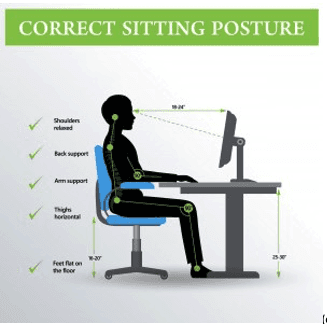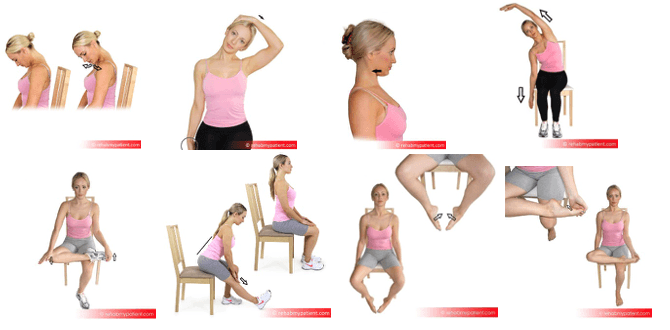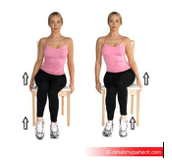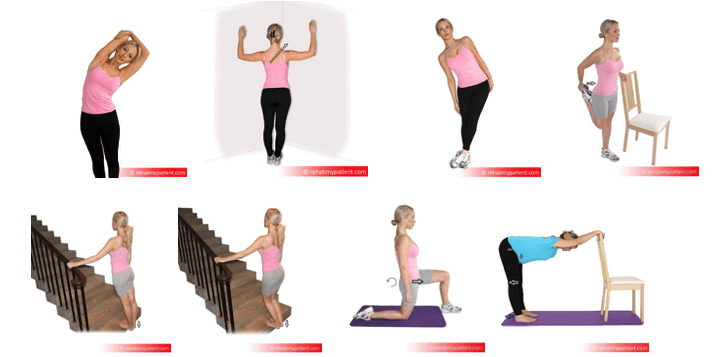Locked backs from lockdown!
A must read if you've been working from home post lockdown!
Everyone’s experience of lockdown has been so different, andI am hearing all sorts of positive stories and sadly emotional and tough timestoo from my patients since I reopened my osteopath clinic nearly 9 weeks ago.
It is so lovely to see longstanding patients who are veryrelieved we are back open but also many new patients coming in with neck, shoulderor lower back pains which they had not experienced before. These new patients are presenting withsymptoms which have arisen during lockdown as a result of the dramatic changesthe pandemic has caused to their daily lives.
With the lockdown rules being put in place so quickly everyonehad to change their daily routine overnight. No-one could have imagined the rapid change to the way they work or tonot having to work and how it could impact our physical and mental well-being. Even now with more people returning to workagain the new ‘normal’ is still taking its toll on our lives and our bodies.
People who normally have physical and active jobs includingbuilders, landscape gardeners, plumbers, window cleaners, hairdressers, massagetherapists, fitness instructors have gone from using their muscles and jointsin particular ways for their jobs to becoming much more sedentary for weeks onend as their jobs abruptly stopped. Thebody is an amazing machine that adapts to change all the time but when it isused to certain postures, it will react when there is a dramatic change to howwe use it. Locked backs, necks, shouldersplus buttock pain are common symptoms being seen in clinic.
For those office/desk-based patients who are now workingfrom a home office (or more likely the dining room table or an ironing boardwhich I heard last week!) they are having different symptoms. The many longhours of phone calls and online meetings are affecting necks, lower backs andgroins – sitting for too long, sitting on an unsupportive chair, sitting infront of computer screens for long hours. The lack of a change of environment for manypeople who are used to commuting or travelling for work has sometimes causedincreased strains for several of my patients working from home leading to jawand neck pain and headaches. The stressthis pandemic has caused has been different for everyone.
I am seeing patients who have been doing more exercise athome (online classes), more walking or trying new sports which has caused knee,shoulder, ankle and arm injuries. I amalso seeing those who have not been able to do as much exercise as before as theyhave been shielding or have been juggling working, homeschooling and homelifeso have little time on their hands.
As schools reopen we are embarking on another new transitionperiod and with uncertainty still continuing on how long Covid could affect ourway of life we need to look after our bodies and health even more.
So, what can you do to look after yourself as the way welive our lives changes for the foreseeable future?
I hope some of the following advice on posture, work set upand stretches/exercises are helpful for adapting some of your normal practices:

Working at a computer from home
Unless you have very proactive and supportive employers, Iknow many people do not have a proper desk or orthopaedic chair at home to workon their computer. With many employers sayingto their staff that they may not return to their offices until early next year,you need to adapt your table and chair in small but effective ways to help yourposture.
When sitting at your desk/table your elbows should be bentat 90 degrees, so your shoulders are relaxed. You need to raise your chair height so you can achieve this initial upperbody posture. If by doing this it meansyour feet are not on the floor just get a couple of books and place under yourfeet. Your feet should be flat, not atan angle on a footrest. Unlike on alaptop where the mouse pad is incorporated into the keyboard, for a PC you needto make sure your mouse is directly in front of you between you and your keyboard(not to the side) – this means you will not be reaching over which can causestrain to your neck and shoulders.
The following image should help you with this set up so youhave your ankles, knees, hips, and elbows at the optimum angles so your core musclescan support your body:
For those of you working on laptops it is best to use awireless or separate keyboard connected to the laptop. Then place the laptop on some books so it isat the optimum height illustrated in the above image.
I am hearing from many home-based office workers that theyare spending many hours on back-to-back online meeting calls which is aggravatingnecks, shoulders and backs. Try to takeat least 10-minute breaks between calls and get up and do some of the stretchesI will illustrate shortly. These willincrease the circulation to the muscles and joints and release any strains thatmight be developing from staying in a position for too long! It will also energise you by getting oxygenaround the body which will help your mood and reduce any feelings of fatigue.
Getting up every hour to get a drink of water is important toofor keeping the body hydrated plus investing in a phone headset for workcalls. This will prevent you from tuckingyour phone under your chin which leads to poor neck and shoulder posture and itobviously frees up your hands too.

So to give you some simple stretches to help you manage anyaches and pains in your neck, shoulders, back, hips, legs, ankles and arms hereare a few exercises you could try and incorporate into your day. These can be done by anyone, whether you aredesk working, not working now or who for those who are doing more sport/walking.
The first set of stretches are all done sitting – the keywith all these stretches is to make sure you are sitting balanced on both buttocks– i.e. You can feel the bones in each buttock and your feet are flat on thefloor.
Thenwith each stretch or movement do this slowly and hold the stretch just at the pointwhere the tension starts with no ‘bouncing’ at the end of the stretch but justbreathing
This next exercise helps to increase movement in your pelvisand hips and lower back if you have been sitting for a long time.

For the next few stretches, you will need to stand and forsome use a chair / table for support. Again,for all these stretches, go into them slowly and hold when you reach the startof the tension for 104 seconds – repeat 3 times and on each side if applicable:

I hope you find the above stretch routine easy to follow butif you want some more advice then I’d be happy for you to email me at charlotte@charlottehuntosteopaths.co.uk
We only have one body and it is key we look after it now toprevent longer term issues – I would rather not see any more locked backs ornecks if you can help yourself more at home!
References:
Exercise photos c/o Rehab My Patient

